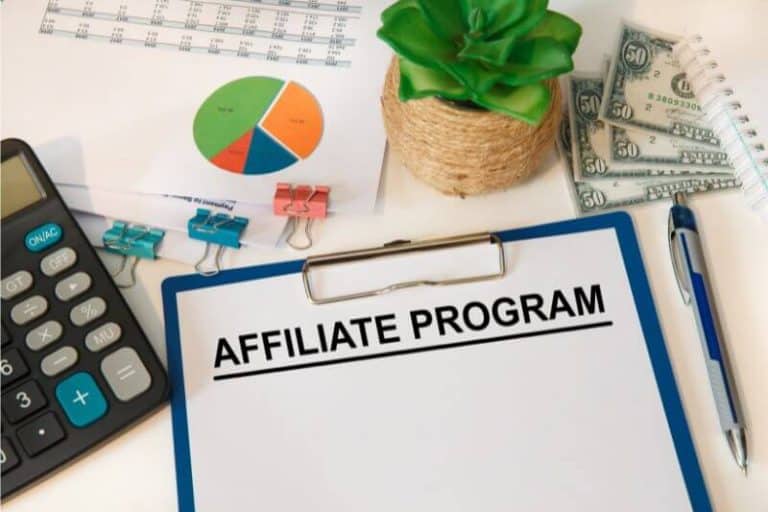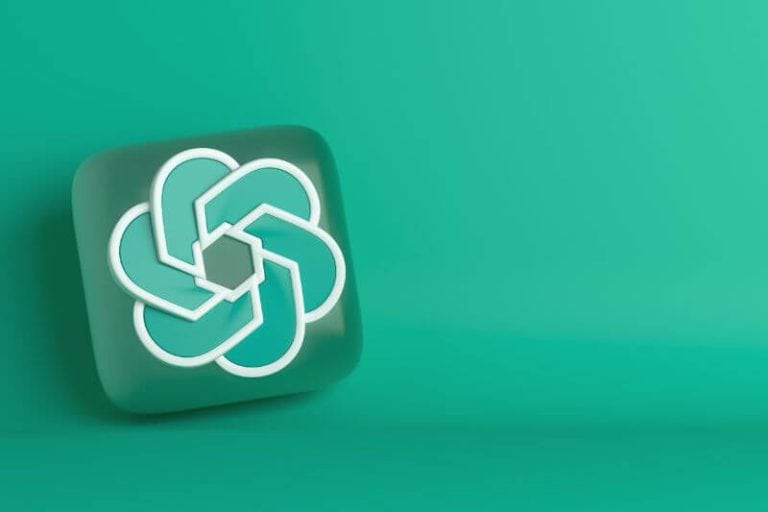How to Make Money Blogging for Beginners: Your Easy Starter Guide

How to Start a Blog for Beginners
So you’re ready to join the world of blogging and start sharing your voice online. Don’t worry, starting a blog is not as difficult as you might think.
Just follow these simple steps to get your blog up and running.
First, decide on a niche for your blog. Choose a topic that you are passionate about and that has the potential to attract a wide audience.
This could be anything from cooking, fashion, travel, or technology. The important thing is to select a niche you enjoy, so you’ll be enthusiastic about writing and sharing your knowledge with others.
Next, choose a catchy and memorable blog name. Your blog’s name should ideally be short, easy to remember, and related to your niche.
Remember, this will be the face of your online presence, so take your time to find a name that truly represents you and your content.
Now it’s time to get your blog online. To do this, you’ll need to sign up for a web hosting service. There are many affordable options available, such as SiteGround, which is popular among beginner bloggers. Sign up for a hosting plan that suits your needs and budget.
After securing your web host, it’s time to install a blogging platform. There are many platforms to choose from, but WordPress is highly recommended due to its flexibility and user-friendly interface. Most hosting services offer easy WordPress installation, so you can start building your blog within a few clicks.
Once WordPress is installed, you can now design your blog. Choose a free WordPress theme that matches your niche and personal style. It’s essential to select a responsive, mobile-friendly theme that loads quickly on all devices.
Now that your blog is visually appealing, it’s time to fill it with content. Write your first blog post and showcase your unique voice and expertise on your chosen topic. Remember to use headings, bullet points, and formatting to make your content more readable and engaging.
Lastly, promote your blog by sharing your posts on social media, joining online communities related to your niche, and engaging with other bloggers. Building relationships within your niche can help increase your blog’s exposure and attract a loyal readership.
So go ahead, follow these steps to start your blogging journey, and watch your online presence grow. Happy blogging!
Choosing a Blog Niche and Name
Identifying Your Target Audience
Before you start a blog, think about the audience you want to reach. This will help you identify the niche that best suits your interests and what you know. Consider demographics such as age, gender, and location, as well as preferences and pain points they might have.
Brainstorming and Evaluating Blog Niches
To find a profitable niche, follow these steps:
- List your interests and passions: Write down all the topics you enjoy and have knowledge about. This ensures you’ll stay motivated and engaged with your blog.
- Research competition: Check if there are already established blogs in the niches you’re considering. Having competition indicates that the niche is profitable, but also be mindful of entering an overly saturated market.
- Determine profitability: Identify if there’s potential for income in your chosen niches by examining the availability of affiliate programs, ads, or sponsored content.
| Niche Idea | Competition | Profitability |
|---|---|---|
| Travel | High | High |
| Food | High | High |
| Sustainable Living | Medium | Medium |
Once you have a list of potential niches, evaluate each based on your audience’s needs and the niche’s profitability. This will help you narrow down your choices.
Selecting a Domain Name
After picking a niche, it’s time to choose a domain name for your blog, which should be:
- Memorable: Keep it short and snappy so it’s easy for people to remember and share.
- Relevant: Your domain name should be related to the theme or niche of your blog, reflecting the content and creating the right expectations for readers.
- Unique: Avoid using a name too similar to existing blogs or websites to prevent confusion.
- Available: Go to a domain registrar (e.g., GoDaddy, Namecheap) to check if the domain name is available for purchase.
Remember that starting a blog and selecting the right niche and name are just the first steps in your blogging journey. Stay committed to your passion, and soon, you’ll reap the rewards of your hard work.
Setting Up the Blog
Picking a Blogging Platform
When starting a blog, the first step is to choose a blogging platform. A blogging platform, also known as a content management system (CMS), is the software that makes it easy to create, manage, and publish your content. Some popular blogging platforms include WordPress, Wix, and Tumblr.
Each platform has its pros and cons, with features ranging from customizable templates to increased security and load speed.
Consider factors like ease of use, flexibility, and long-term growth before picking the platform that best suits your needs.
Selecting a Web Hosting Provider
Once you’ve decided on a blogging platform, the next step is selecting a web hosting provider. A web host is a company that stores your blog’s files on its servers and makes sure your blog stays accessible to visitors.
When choosing a web host, consider factors like:
- Uptime: The percentage of time your blog will be accessible online
- Bandwidth: The amount of data transfer allowed (for handling traffic)
- Customer support: The availability and quality of technical assistance
Some popular web hosting providers include Bluehost and Hostinger. Keep in mind the cost to start a blog, as hosting providers offer different plans with varying features and pricing.
Choosing a WordPress Theme
If you’ve chosen WordPress as your blogging platform, selecting a visually appealing and functional theme is crucial.
A WordPress theme consists of a set of templates and stylesheets that define the appearance and layout of your blog.
There are thousands of free and premium themes available, so take your time to find one that aligns with your vision and goals.
When browsing themes, consider these aspects:
- Responsiveness: Make sure your blog looks great on all devices (desktop, tablet, and mobile)
- Customizability: Look for themes that allow you to easily modify color schemes, fonts, and layouts
- Performance: Choose a theme with optimized code that won’t slow down your site’s load time
- Compatibility: Ensure the theme works seamlessly with essential plugins you may want to use
My favorite free WordPress themes are Kadence, Generatepress & Astra. All 3 are available from the WP repository, well-coded, and easily customizable.
Remember, you can always change your WordPress theme later if you decide you want a new look or additional functionality for your blog.
Creating Quality Content
Writing Your First Blog Post
Your first blog post is an essential part of setting the tone for your blog. To create a great first impression, focus on delivering something engaging and valuable to your readers.
Choose a topic you’re passionate about, do thorough research, and promptly address your audience’s pain points.
Keep paragraphs short, and use bullet points and images to break up the text when necessary.
Finding Relevant Blog Topics
Having a variety of relevant blog topics is crucial for keeping your readers engaged. To come up with new ideas, consider:
- What problems your target audience is facing
- Current events and trends in your niche
- Online courses, ebooks, and other resources that inspire you
- Questions and requests from your readers
Remember, the more you write about topics that genuinely interest you, the more likely your readers will be to connect with your content.
Crafting Engaging Headers and Subheadings
Keep your readers hooked with captivating headers and subheadings throughout your blog posts. They should:
- Be concise and informative
- Use strong, action-oriented language
- Utilize keywords relevant to your content
An engaging header grabs the reader’s attention, while informative subheadings help them navigate and understand your blog post better.
Developing an Editorial Calendar
A well-organized editorial calendar helps you maintain your blog consistently. It also ensures that you have plenty of fresh ideas and themes at your disposal.
When creating your editorial calendar, consider the following:
- Frequency of blog posts (daily, weekly, bi-weekly)
- Seasonal themes and events
- Deadlines for written content, images, and promotions
- Time for editing and revising
By developing a comprehensive editorial calendar, you ensure your blog remains engaging and relevant, ultimately boosting reader retention and your opportunities to make money from your blog.
Monetizing Your Blog
When you start your blogging journey, one of the main goals you may have is to make money blogging.
There are various ways to monetize your blog, and in this section, we’ll discuss three popular methods: Affiliate Marketing, Display Ads and Ad Networks, and Sponsored Posts and Partnerships.
Affiliate Marketing
Affiliate marketing allows you to earn a commission by promoting other companies products on your blog. This revenue stream is great for blogging beginners as it offers flexibility and customization to suit your niche.
To get started, you can join affiliate programs like Amazon Associates or other network platforms specific to your blogging niche.
Remember to always disclose your affiliate links to maintain transparency and trust with your audience. As you grow your blog, you can diversify your affiliate marketing strategies to include multiple product categories and expand your income sources.
Display Ads and Ad Networks
Display ads are advertisements that you place on your blog, allowing you to earn passive income from the traffic you receive.
Google AdSense is a popular ad network that serves ads on your website, paying you for every click or impression your ads generate. This platform is user-friendly and perfect for blogging beginners looking to monetize their sites.
Another approach is joining premium ad networks like Mediavine or AdThrive, which typically provide high-quality ads and higher earnings than Google AdSense. However, to qualify for these networks, your blog must meet specific traffic requirements.
When integrating display ads, maintain a balance between monetization and user experience, as excessive ads can deter your readers.
Sponsored Posts and Partnerships
As a professional blogger, you can collaborate with companies to develop sponsored posts or establish long-term partnerships.
In sponsored posts, the company pays you to create content featuring their products, services, or brand. These collaborations can be highly lucrative and offer opportunities to monetize your expertise.
To attract sponsorships, focus on building your blog’s reputation and growing your audience. Showcasing your authority in your niche can help you secure deals with relevant companies.
Remember to adhere to the Federal Trade Commission’s guidelines and disclose sponsored content to maintain trust with your readers.
In conclusion, monetizing your blog is a journey that may require time and effort, but with determination and the right approach, you can enjoy the benefits of blogging for a living.
Start by exploring affiliate marketing, display ads, and sponsored posts, and continue learning, adapting, and expanding your monetization strategies as you grow your blog.






